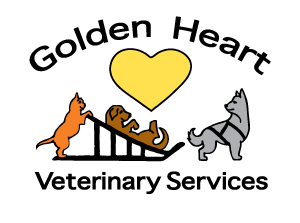Illustrated Articles
-
Nutritional changes can improve the management and treatment of pancreatic diseases in cats. Diet type and pancreatitis in cats may not be as crucial as in dogs. Diet factors for managing pancreatitis, exocrine pancreatic insufficiency, diabetes mellitus, and insulinoma are discussed. Recommendations for feeding diabetic cats and approaching hypoglycemia are also described.
-
Chronic kidney disease is frequently diagnosed in aging cats. Nutrition plays an important role in managing CKD in cats. Commercial diets for cats with CKD are developed support kidney function while maintaining body condition. A kidney support diet contains less protein, sodium, and phosphorus and increased omega-3 fatty acids. Your veterinarian will help you choose an appropriate formulation for your cat which will slow the progression of this disease, contributing to both life expectancy and quality of life.
-
Like dogs and people, cats are susceptible to age-related brain changes associated with Cognitive Dysfunction Syndrome (CDS). Behavioral changes such as excessive vocalization at night, having bathroom accidents, and increased anxiety are often associated with CDS, but a thorough examination must be completed to ensure that another medical reason is not the cause of the behavioral changes. Supportive care for the condition is discussed.
-
Nutrition is very important in managing cats with diabetes mellitus. Achieving a lean body condition is associated with better glucose control and an increased chance of remission. Other factors in dietary management of diabetes mellitus are discussed.
-
When the digestive tract is upset, vomiting and diarrhea may result. Since the causes of these symptoms are varied, it's best to consult a veterinarian. Often, a gastrointestinal (GI) diet is recommended to support the digestive tract and ensure the gut gets the nutrients it needs to recover. A bland diet of cooked chicken and rice might be recommended, but it has several limitations and is not appropriate for long-term feeding.
-
This handout discusses the risks and benefits of feeding a home-prepared versus commercial diet to your cat or dog. Topics highlighted include food safety, nutritional imbalances, and the need to ensure that any home-prepared diet has been well researched for nutritional safety and completeness.
-
Veterinarians recognize the relationship between nutrition and the health of the skin and haircoat. It is important to prevent malnutrition, both by preventing deficiencies AND excesses of nutrients. Your veterinarian is the very best source of information and guidance for choosing the most appropriate nutrient profile for your cat.
-
Cats are obligate carnivores and cannot be vegetarian. Through evolution, cats have become dependent on the specific forms of nutrients found only in animal tissue. Feeding your cat a proper diet is one of the most important aspects to help keep them at optimal health. It is important to keep in mind that the nutritional requirements and dietary preferences change over the course of the cat's lifetime. Your veterinary health care team can help you make good-quality diet choices and determine the correct number of calories your cat needs in a day.
-
The optimal diet varies from species to species, and contains an ideal ratio of the major essential nutrients of proteins, fats and carbohydrates, as well as adequate levels of trace nutrients such as vitamins and minerals. While a recipe for a home-cooked diet may appear to come from a knowledgeable source, ideas about what constitutes the ideal diet for dogs and cats is currently evolving. Your veterinarian can help ensure that your pet's diet is appropriate and healthy.
-
By-products are ingredients commonly found in commercial pet foods and are considered highly desirable by many human cultures. However, there is ambiguity surrounding this term and misperceptions related to overall nutritional value. This article reviews the formal definition of by-products in the pet food industry and highlights the nutritional and environmental benefits they provide.
